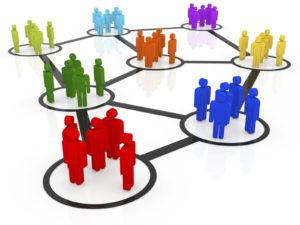Too much of the content provided by the Association Community, particularly within the Professional Societies is not reaching the audience that must be influenced to take it into consideration; the public and policy decision-makers. With all the complexities and the girth of information with which associations currently operate, the time has come for us to accept in a real and meaningful way the necessity of thinking how content is obtained, viewed, and used in building sustainable associations. We need to understand that the complexities we face are better addressed by a recognition of the value of interdependence in both our operations and thinking processes. There is too much internal speak and not enough outreach to the broader community.
There was a time when associations possessed content particular to their cause or discipline that was unique to the Association. Found almost exclusively in their journals and other writings, the Association was the place to go for the best in the field. With the advent of social media, the internet of things, and the interconnected nature brought on by technology, the specialty content which was once exclusive to individual associations and disciplines is not so unique or exclusive. To be sure, research conducted by and peer reviewed by specific discipline professionals is likely to be of the highest quality and appear in their academic journals; it is also true that one can go on the net and receive thousands of potential articles on almost any imaginable subject. And when we consider the potential advances in artificial intelligence some content will be developed through AI processes that we are yet unable to imagine.
How associations deal in this environment requires a true commitment to the recognition that building interdependent relationships among traditional and nontraditional sources is essential to association sustainability and stability. The idea that any one institution is the sole source and conveyor of content no longer fits with the available options technology has given any individual. We can certainly argue over the quality, but we cannot argue over general availability. As technology brings huge amounts of content to our fingertips with ever increasing speed we cannot ignore the need for associations to create new collaborations for the availability, dissemination, and the essential quality control of the discipline or causes content.
If you do a google search on early childhood education you will find about 117,000 items cited. If you do a search on emerging trends in artificial intelligence you find 2.1 million results. If you do a search on heart disease, 135+ million results. If you do a search on eradicating poverty in the United States you will find 886,000 results, dental care 61 million, financial planning 108 million, not-for-profit board development 180 million. Of course, we can qualify the search and reduce the numbers. That is not the point. The amount of information is staggering and the quality is up to the user. Many more individuals inside and outside the field are searching and finding articles, good and bad, via simple google searches.
Thus, the Association community must accept and develop new relationships built on a better understanding and activist practices in interdependency. An individual’s ability to share whatever they want, whenever they want, whether high quality or low, or even poisonous is a part of modern social behavior. The ubiquitous nature of content is not only here to stay, but is likely to dramatically increase. Individuals are not dependent on the previous norms that the disciplines and their Associations have long promulgated and which associations have financially lived on.
Learning to organize for the support of the discipline or a cause requires an interdependence model not a dependency or independency one. The general public and policy community is not required to look for what and how the discipline and association communities sees the world. Yes, we can argue over what should-be or we can organize to help make our desired should-be come true.
Here are some basic thoughts on accepting and utilizing interdependency is an essential tool in the sustainability and value of content commonly provided by the Association community;
- Find, create, and build broad partnerships both within and from ancillary organizations and individuals deeply concerned with the subject matter
- Search out the outliers and engage them
- Adopt a more open sharing of high quality research and content as seen from the non-academics perspective
- Convert academic jargon into more user friendly language (people are not dumb, but they are busy and have many competing interests for their time, money, and commitment)
- Find a narrative that illustrates the value of the content to others
- Shorten it up and compel the reader to want more detail
- Do not talk or write down to others through closed meetings, conferences, and academic journals designed only for the gifted few
- See the content as a way to organize others outside the discipline or cause in support of the data
- Develop a public abstract, not just an academic abstract
In an era of ubiquitous availability, the task of making the case for a more data driven approach falls on the writers and Association community. It will not miraculously occur. We must help bring individuals to new levels of understanding, not simply preach at them and expect them to follow. The modern association’s role in this area is ill defined and one of their financial pillars demands a new and better approach. An approach that considers content in an organizing frame where interdependence serves as a guiding principle would be well advised.